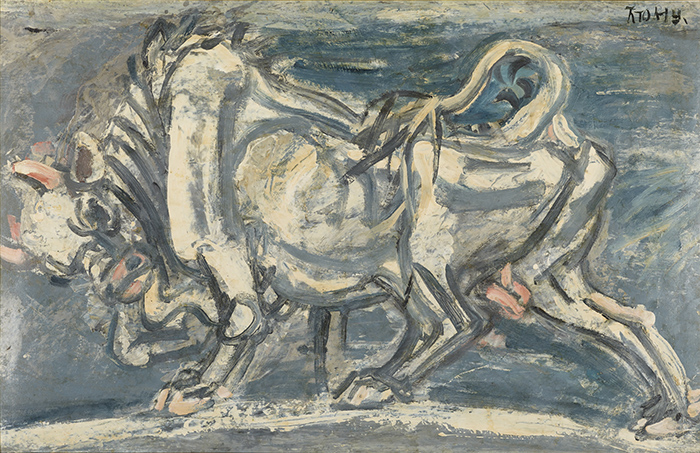
Lee Jung Seob produced some of his most celebrated works during his Tongyeong period in 1953 and 1954, such as his famous bull series, as well as numerous oil paintings of the Tongyeong seaside landscape.
This year marks the 100th anniversary of the birth of Lee Jung Seob (1916-1956), a prolific modern artist who created visionary works throughout the colonial period, the regaining of independence in 1945 and during the devastation of the Korean War (1950-53).
In celebration of Lee Jung Seob and his oeuvre, the National Museum of Modern and Contemporary Art has put together a retrospective that looks at the life and artistic vision of the late artist. The exhibit places visitors in the footsteps of Lee who, despite destitute conditions and mental illness, persevered with an undying passion right up until his last breath at the age of 41 in 1956.
The retrospective is divided into four sections. The first gallery opens with a selection of the artist's earliest works, the few that remain from Lee's pre-war student years in Pyongyang and Tokyo. Also on exhibit are works from his Seogwipo, Jeju Island and Busan years, following the outbreak of the Korean War (1950-1953). Paintings and drawings from this period feature children, animals and plants mingling together with a splash of surreal lines and colors.
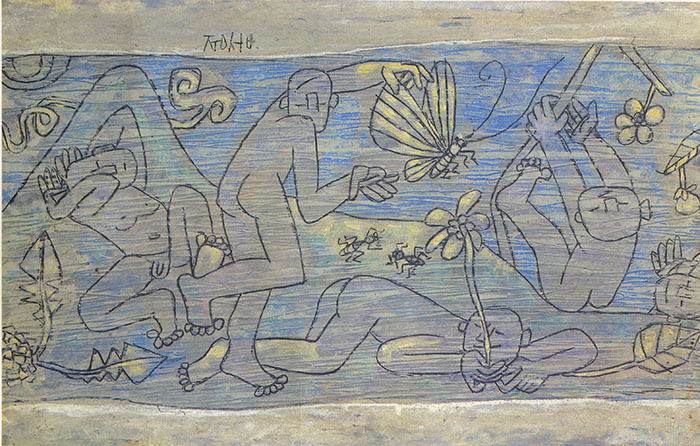
During his time in Seogwipo, Jeju Island and the port city of Busan, all from 1950 to 1953, Lee Jung Seob completed a series of paintings depicting nude children in commune with nature. Pictured is 'Children of Spring' (1952-53), drawn with pencil on paper and colored with oil paints.
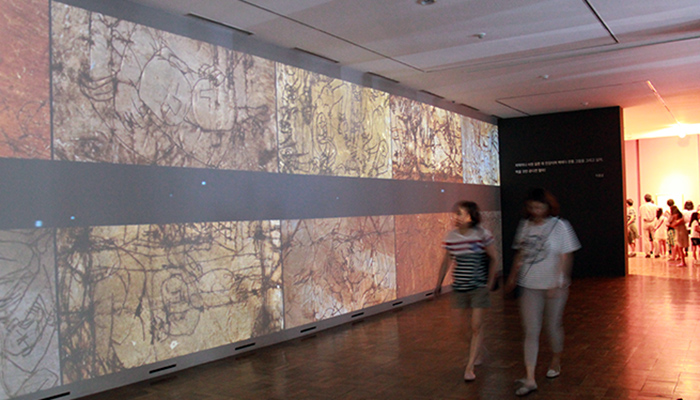
For this year's retrospective, the Museum of Modern and Contemporary Art renders Lee Jung Seob's tinfoil paintings on film and projects them onto a 16-meter wall, creating an illusion of a larger-than-life mural.
Upon entering the dimly lit second gallery, visitors are met with a display of paintings drawn on pieces of tinfoil from cigarette packs. Some 40 works, scratched and etched in this new technique invented by Lee, are in the spotlight, including three pieces on loan from the Museum of Modern Art in New York. The tinfoil paintings are also projected onto a 16-meter wall, becoming a larger-than-life video mural, posthumously fulfilling Lee's wish to transfer his tinfoil imagery to a wall painting. Past the moving murals are some of Lee's most celebrated works from after the Korean War, during his most prolific days in the coastal city of Tongyeong. Here, visitors can admire his famous bull series and paintings of coastal landscapes.
The third gallery invites art aficionados into an intimate space filled with personal letters that the artist wrote to his wife and two sons in 1952, during the Korean War. Lee lived alone in Korea during this time while his family took refuge in Japan, and the heartfelt letters convey the artist's intense longing for his loved ones. Effortlessly written and delivered with love, the letters, which are illustrated with anecdotes and depictions of the artist's family, allow visitors to get a glimpse of the artist's pen and heart at work.
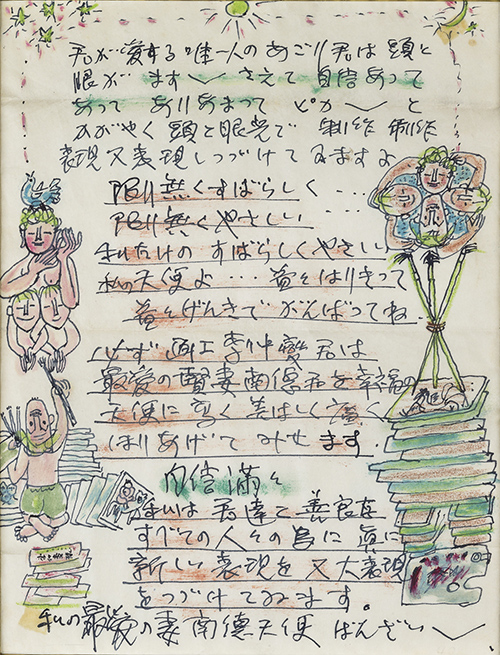
Lee Jung Seob's letters to his wife and children give present-day audiences a chance to glimpse Lee's personal life and artistic vision.
In the final gallery, we arrive in the darkest years that lead up to the death of the artist. During the Daegu and Seoul period, Lee suffered from extreme poverty as well as mental illness induced by a series of professional failures. Paintings like "Family of Poet Ku Sang" (1955) or the depiction of a sickly bull, lacking any strength or vivacity of the former years, provide evidence of the artist's dwindling health. Paintings displayed in this final chapter of the exhibit are small and sorrowful, reflecting Lee's physical and mental state in his final year during which he suffered from bulimia and malnutrition, before passing away in 1956 at the age of 41.
"When thinking about Lee Jung Seob, most people will point to his bull series as his representative and most celebrated work," said Moon Hyejung, educational assistant at the Museum of Modern and Contemporary Art. "While it is true that Lee enjoyed painting bulls, my hope is that our retrospective will invite audiences to think outside the box. You will notice that there are other motifs present in Lee's body of work, like the crabs during the Seogwipo period or the groups of nude infants in his children series. Our collection of both famous and intimate works will allow visitors to spend time getting to know Lee Jung Seob the man, the artist."
The retrospective is scheduled to run until Oct. 3. More information on the exhibit can be found at the link below.
http://www.mmca.go.kr/eng/exhibitions/exhibitionsDetail.do?menuId=1010000000&exhId=201603160000414
By Lee Hana
Korea.net Staff Writer
Photos: Lee Hana, Museum of Modern and Contemporary Art
hlee10@korea.kr
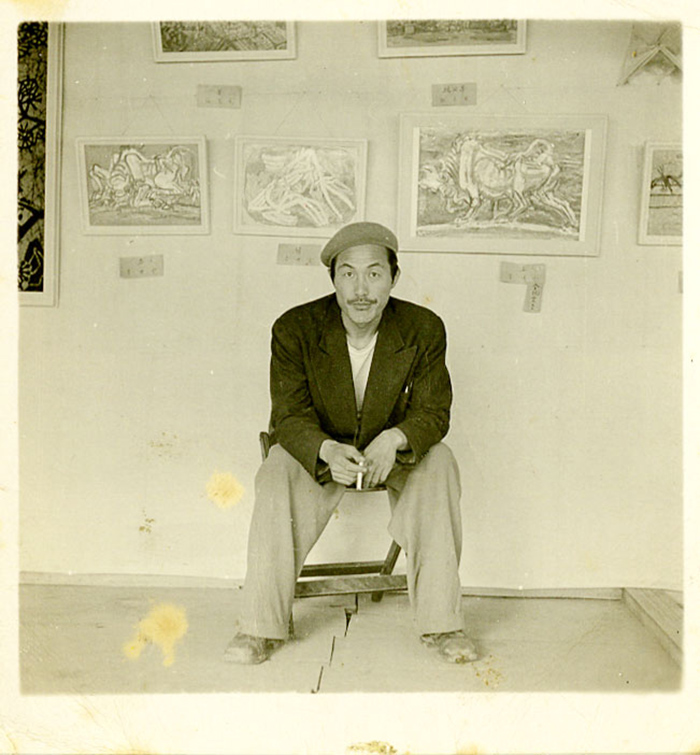
A portrait of Lee Jung Seob during his heyday in 1954 shows him in an exhibition held in Tongyeong.